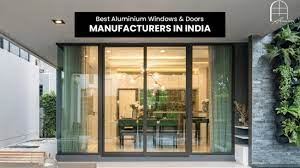In the quest for energy efficiency and sustainable architecture, double hung window are emerging as a groundbreaking innovation. These advanced windows leverage the principles of thermal insulation and vacuum technology to significantly reduce energy consumption in buildings. As the world grapples with climate change and the need to reduce carbon footprints, vacuum windows present a promising solution for both residential and commercial properties.
Understanding Vacuum Windows
Vacuum windows, also known as vacuum-insulated glazing (VIG), consist of two or more glass panes separated by a thin vacuum layer. The vacuum layer acts as an excellent insulator because it eliminates air molecules, which are the primary medium for heat transfer. By removing air, vacuum windows drastically reduce conductive and convective heat loss, leading to superior thermal insulation compared to traditional double or triple-glazed windows.
How Vacuum Windows Work
The principle behind vacuum windows is similar to that of a thermos flask. In a vacuum, there are no air molecules to conduct heat, which means that the transfer of heat through conduction and convection is virtually eliminated. However, radiant heat transfer still occurs, but this can be minimized using low-emissivity (low-e) coatings on the glass surfaces. These coatings reflect infrared radiation, further enhancing the insulating properties of the windows.
Key Benefits of Vacuum Windows
- Enhanced Thermal Insulation: Vacuum windows offer significantly better insulation compared to conventional windows. This leads to reduced heating and cooling demands, which can lower energy bills and decrease the carbon footprint of a building.
- Slim Profile: Despite their superior insulating properties, vacuum windows are much thinner than traditional double or triple-glazed windows. This makes them an ideal choice for retrofitting older buildings where space and weight constraints may be an issue.
- Noise Reduction: The vacuum layer also acts as a sound barrier, providing excellent noise insulation. This makes vacuum windows particularly beneficial in urban areas or near busy roads where noise pollution is a concern.
- Condensation Prevention: The absence of air in the vacuum layer means there is no moisture to condense on the inner surfaces of the glass, reducing the risk of mold and mildew growth.
- Durability: Vacuum windows are designed to withstand significant pressure differences, making them robust and durable. They also have a longer lifespan compared to traditional windows, reducing the need for frequent replacements.
Challenges and Considerations
While vacuum windows offer numerous benefits, there are also challenges and considerations to keep in mind:
- Cost: The initial cost of vacuum windows is higher than that of traditional windows due to the advanced manufacturing processes and materials required. However, the long-term energy savings can offset this initial investment.
- Manufacturing Complexity: Creating a vacuum between glass panes requires precise technology and stringent quality control. Any imperfections can compromise the vacuum seal, reducing the effectiveness of the insulation.
- Limited Availability: Vacuum windows are still relatively new in the market, and their availability may be limited in some regions. However, as technology advances and demand increases, it is expected that production will scale up and prices will come down.
Applications of Vacuum Windows
The potential applications of vacuum windows are vast and varied. They are particularly suitable for:
- Residential Buildings: Homeowners looking to improve energy efficiency and reduce utility bills can benefit from installing vacuum windows, especially in climates with extreme temperatures.
- Commercial Buildings: Office buildings, hotels, and retail spaces can achieve significant energy savings and improve occupant comfort by incorporating vacuum windows into their design.
- Historic Buildings: Vacuum windows are an excellent choice for retrofitting historic buildings where maintaining the original architectural aesthetics is crucial. Their slim profile allows for easy installation without altering the appearance of the structure.
- High-Performance Buildings: Buildings designed to meet stringent energy efficiency standards, such as Passive House or LEED certification, can use vacuum windows to achieve their performance goals.
The Future of Vacuum Windows
As the demand for energy-efficient building solutions grows, vacuum windows are poised to become a standard feature in modern architecture. Continued advancements in materials science and manufacturing techniques will likely drive down costs and increase adoption. Additionally, ongoing research into improving the durability and performance of vacuum windows will further enhance their appeal.
In conclusion, vacuum windows represent a significant leap forward in window technology, offering unparalleled thermal insulation, noise reduction, and durability. As we move towards a more sustainable future, these innovative windows will play a crucial role in reducing energy consumption and enhancing the comfort and efficiency of our built environments.

